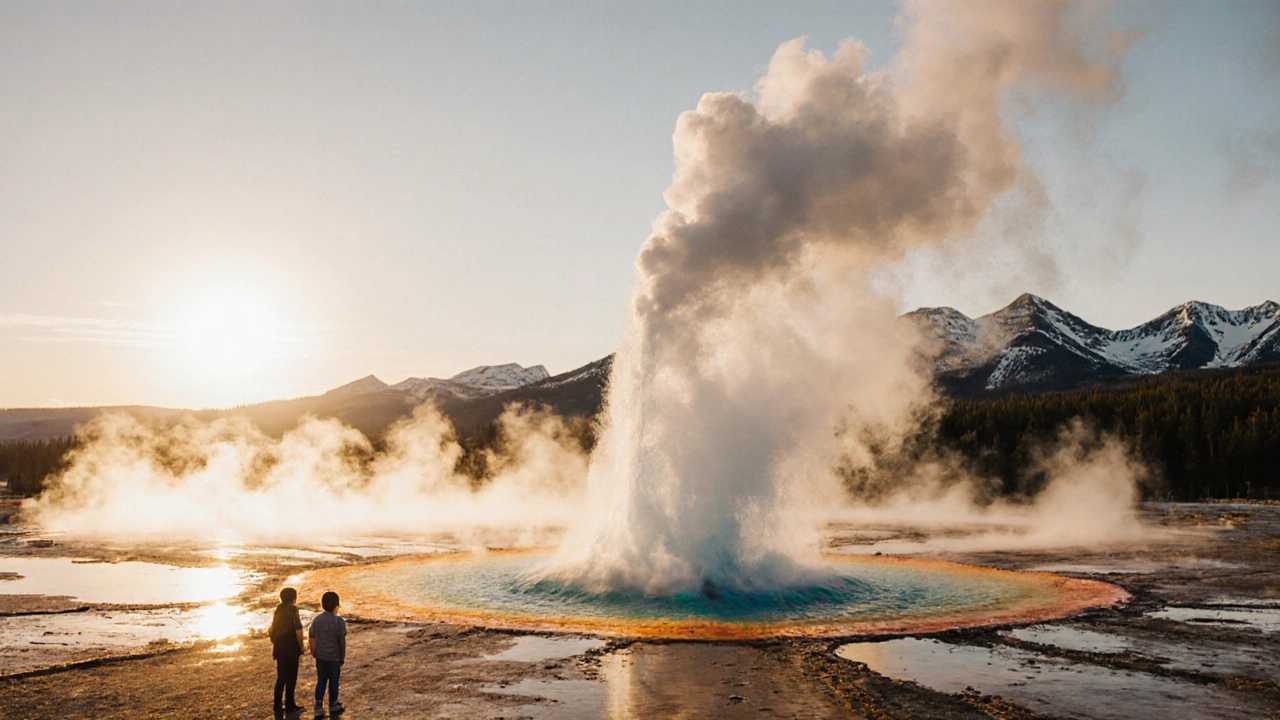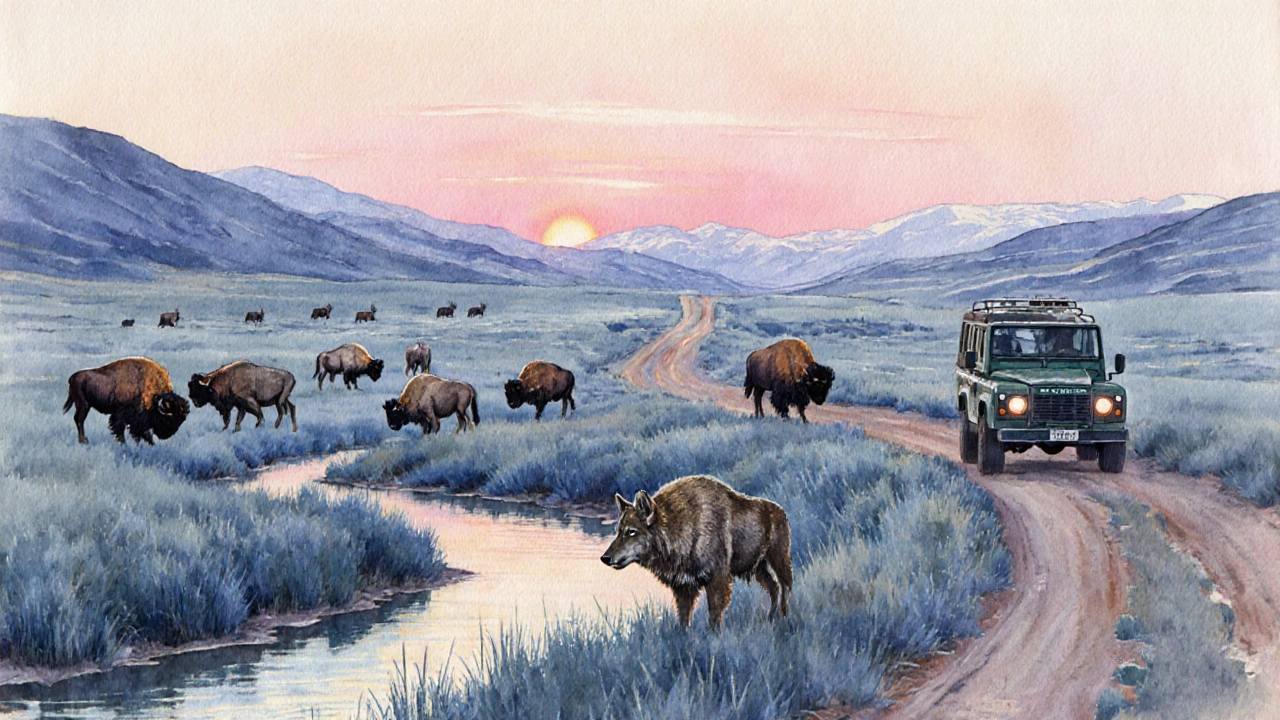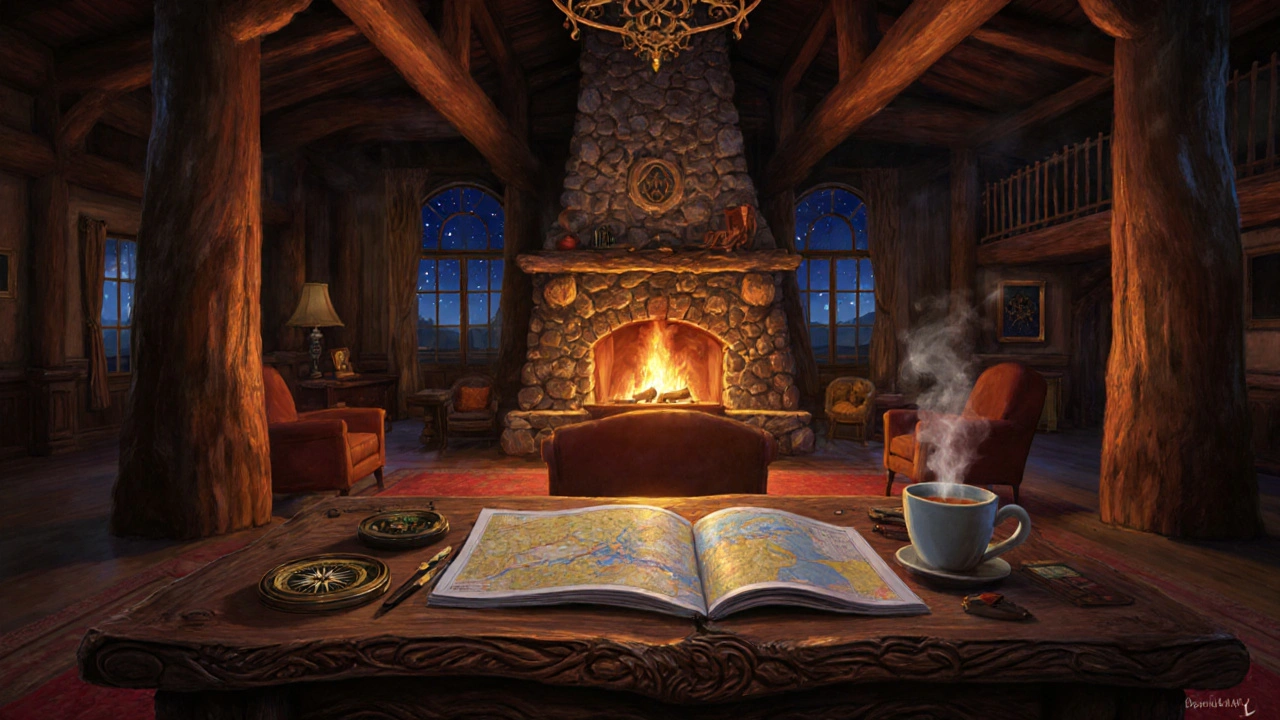How Many Days Should You Spend in Yellowstone? A Practical Guide

Planning a trip to Yellowstone National Park is a sprawling 2.2‑million‑acre wilderness of geysers, canyons, and wildlife raises a simple but crucial question: how many days do you really need? The answer depends on your travel style, the season, and how deep you want to go. This guide breaks down the variables, offers three ready‑to‑use itineraries, and gives lodging tips so you can match your Yellowstone itinerary to the time you have.
Key Takeaways
- 2-3 days cover the main geothermal basin and a quick wildlife sweep.
- 4-5 days let you add the Grand Canyon of the Yellowstone, Yellowstone Lake, and a night in the backcountry.
- 6-7 days provide a relaxed pace, multiple lodging changes, and time for less‑crowded areas like Lamar Valley.
- Staying inside the park saves driving time but costs more; outside options are cheaper but add 30‑60minutes each way.
- Summer needs more days for crowds; shoulder seasons (May, Sept‑Oct) let you see more in fewer days.
Below you’ll find the factors that shape the perfect length, three detailed itinerary options, and practical tips on where to sleep.
What Shapes the Ideal Length?
Before picking a number, consider these five drivers:
- Travel style: Are you a rapid‑hitter who wants only the highlights, or a slow traveler who likes leisurely hikes?
- Season and crowds: July and August bring long lines at Old Faithful, while May and early October offer open roads and shorter waits.
- Geographic base: Lodging inside the park (e.g., Old Faithful Inn is a historic log hotel right on the geyser basin) reduces daily drive times. Staying outside (e.g., West Yellowstone) adds travel but saves money.
- Desired activities: Day‑long hikes (e.g., Mount Washburn), wildlife drives (Lamar Valley), or water‑based pursuits (Yellowstone Lake) each need buffer time.
- Physical stamina: Some visitors prefer a single‑day marathon; others need a slower rhythm with rest days.
Three Ready‑Made Itineraries
Pick the plan that matches your answers to the drivers above. The table compares the core elements of each option.
| Trip Length | Main Areas Covered | Key Activities | Lodging Nights Inside Park | Pros | Cons |
|---|---|---|---|---|---|
| 2-3 days | Old Faithful Basin, Upper Geyser Basin, Mammoth Hot Springs | Geyser watching, short hikes, visitor‑center tours | 1 night (Old Faithful Inn or Canyon Lodge) | Minimal driving, covers iconic sights | Crowded, limited wildlife viewing |
| 4-5 days | All of short trip + Grand Canyon of the Yellowstone, Yellowstone Lake, Lamar Valley | Hiking to Upper Falls, boat ride on lake, dusk wildlife drive | 2-3 nights (mix of Old Faithful Inn, Lake Hotel, Canyon Lodge) | Balanced pace, diverse scenery, decent wildlife chances | More accommodation bookings needed |
| 6-7 days | Full park loop + backcountry day hike (e.g., Mount Washburn), extra time in Yellowstone River corridor | Long hikes, photography sessions at sunrise, multiple wildlife drives | 4-5 nights (including remote cabins like Grant Village) | Relaxed schedule, deep immersion, less rushed photography | Higher cost, more logistical planning |

Sample Day‑by‑Day Plans
Short (2‑3 Days)
- Day1: Arrive via West Yellowstone, drive to Old Faithful is the park’s most predictable geyser, erupting roughly every 90 minutes. Watch two eruptions, then explore the Upper Geyser Basin (Grand Prismatic, Morning Glory). Evening: check into Old Faithful Inn and enjoy the historic lobby.
- Day2: Morning drive to Mammoth Hot Springs is a terrace of limestone caldera formations. Walk the boardwalk, visit the historic Fort Yellowstone, then head to the Norris Geyser Basin for quick stops at Steamboat Geyser (world’s tallest).
- Optional Day3: If you have a third day, add a short hike to Grand Canyon of the Yellowstone is a dramatic canyon with views of Upper and Lower Falls. The South Rim Trail gives spectacular photo ops in under three hours.
Medium (4‑5 Days)
- Days1‑2: Same as short itinerary.
- Day3: Drive to the Canyon area. Hike the North Rim Trail to see the Lower Falls from a different angle. Afternoon: relax at the Canyon Lodge dining area.
- Day4: Early morning wildlife drive through Lamar Valley is the park’s premier predator-watching arena, especially at dawn. Spot wolves, bison, and elk. Afternoon: head to Yellowstone Lake is the largest high‑altitude lake in North America for a short boat cruise or lakeside walk.
- Day5: Use as a buffer day for rain or extra wildlife viewing. Optional hike to Mount Washburn is a 10,240‑ft summit offering panoramic views of the park (moderate 6‑mile round‑trip).
Extended (6‑7 Days)
- Days1‑4: Follow the medium plan, spreading activities over more nights inside the park.
- Day5: Dedicated backcountry day. Drive to the south entrance, park at the trailhead for Storm Point (LakeYellowstone), a 7‑mile hike with lakeside cabins.
- Day6: Early sunrise at Grand Canyon of the Yellowstone for softer light on the falls. Afternoon: visit the historic Lake Hotel is a turn‑of‑the‑century lakeside resort offering quiet rooms and fine dining for a relaxed dinner.
- Day7: Leisurely drive along the Yellowstone River, stopping at lesser‑known hot springs like Black Sand Basin before exiting the park.
Lodging Strategies: Inside vs. Outside the Park
Where you sleep heavily influences how many days feel doable.
- Inside‑Park Lodging: Options range from historic hotels (Old Faithful Inn, Lake Hotel) to cabins and budget‑friendly campgrounds. Benefits include no daily long drives and easy access to sunrise spots. Drawbacks are higher nightly rates (often $250‑$400 in summer) and the need to book months in advance.
- Outside‑Park Lodging: Towns like West Yellowstone, Gardiner, and Jackson offer hotels, motels, and vacation rentals at $100‑$180 per night. You’ll add roughly 30‑45 minutes each way to major attractions, but the price gap can be worth it if you’re on a tighter budget.
- Hybrid Approach: Split your stay-two nights inside for the geyser basin, then two nights outside for the lake and canyon area. This balances cost and travel time, especially for the medium‑length itinerary.

Seasonal Considerations
The park’s rhythm changes dramatically over the year.
- Peak Summer (June‑August): All roads open, but crowds mean longer lines at Old Faithful and limited parking at popular trailheads. If you only have 2‑3 days, expect to spend extra time waiting.
- Shoulder Seasons (May, September‑Early October): Snowfall is rare above 7,000ft, and many roads (e.g., the Northeast Entrance) open early. Wildlife is more active, especially in Lamar Valley during the elk rut (late September). You can compress a medium itinerary into 4 days.
- Winter (November‑April): Most roads close; only the North and East entrances stay open. Visiting in winter requires a guided snowcoach or snowmobile tour, which is a whole different planning scenario-outside the scope of this guide.
Tips to Maximize Your Time
- Start early: sunrise arrivals at geyser basins avoid the biggest crowds.
- Use the park’s free shuttle (operational in summer) from Old Faithful to the Midway Geyser Basin to cut down on parking hassles.
- Download the official NPS app for real‑time road closures and wildlife sightings.
- Carry a portable charger and a reusable water bottle; services are limited once you’re off the main loop.
- If you’re staying outside, book a hotel with a complimentary breakfast-fuel for those long drives.
Frequently Asked Questions
Can I see Old Faithful erupting more than once in a day?
Yes. Old Faithful erupts roughly every 90minutes, so you’ll typically witness two to three eruptions in a single morning if you arrive early.
Is it worth paying for a night inside the park for a short 2‑day trip?
If you value seeing sunrise at geysers or want to skip the long drive back to West Yellowstone each evening, a single night at Old Faithful Inn or Canyon Lodge makes the short trip feel less rushed.
What’s the best time of year for wildlife photography?
Late September through early October offers the elk rut and active wolves in Lamar Valley, plus thinner crowds. Early morning light also enhances photo quality.
Do I need a reservation for the park’s campgrounds?
Yes, most campgrounds (e.g., Madison, Canyon) require reservations months in advance during the summer season. First‑come‑first‑served sites are limited to the shoulder months.
How far in advance should I book lodging inside the park?
The NPS reservation system opens bookings for the summer season in mid‑January. For high‑demand spots like Old Faithful Inn, you’ll need to reserve as soon as slots open, often 6‑12 months ahead.
Yo, if you’re looking to maximize your park ROI, treat the geyser basins as high‑density hotspot clusters and bang ‘em out in the morning. Use the shuttle loop to cut down on drive‑time latency, and you’ll shave at least an hour off each day’s itinerary. Pack light‑weight gear, stay hydrated, and keep your GPS calibrated for those back‑country spur routes. Remember, efficiency is key when you’ve only got 2‑3 days to hit the main nodes.
For travelers seeking a seamless experience, I highly recommend securing reservations through the official NPS portal as early as January for Summer demand. The Old Faithful Inn, while iconic, commands premium rates; however, booking a Canyon Lodge room often yields comparable access at a modest differential. Should budget constraints arise, consider lodging in West Yellowstone and allocate additional transit time to key attractions. A well‑planned itinerary, complemented by advance lodging commitments, ensures minimal disruption and optimal enjoyment of Yellowstone’s diverse ecosystems.
It’s beneficial to calibrate your daily mileage to your personal stamina level, especially when integrating longer hikes such as Mount Washburn. Allocate buffer periods in the schedule for unexpected wildlife sightings or road closures, which are commonplace during shoulder seasons. By maintaining a flexible approach, you can adapt your route without compromising the overall experience.
When designing an itinerary for families, it is essential to incorporate both educational and recreational elements to sustain engagement across age groups. Begin with the Upper Geyser Basin, where interpretive signs provide context for geothermal activity, then proceed to the Narragansett Wildlife Loop for observation of bison and elk in a low‑impact setting. Remember to factor in meal breaks at designated picnic areas to reduce driving fatigue. By structuring the day with clear milestones, participants can anticipate transitions and remain attentive throughout the journey.
The shoulder months of May and early October present a unique balance of open roads and vibrant wildlife activity, making them ideal for condensed itineraries.